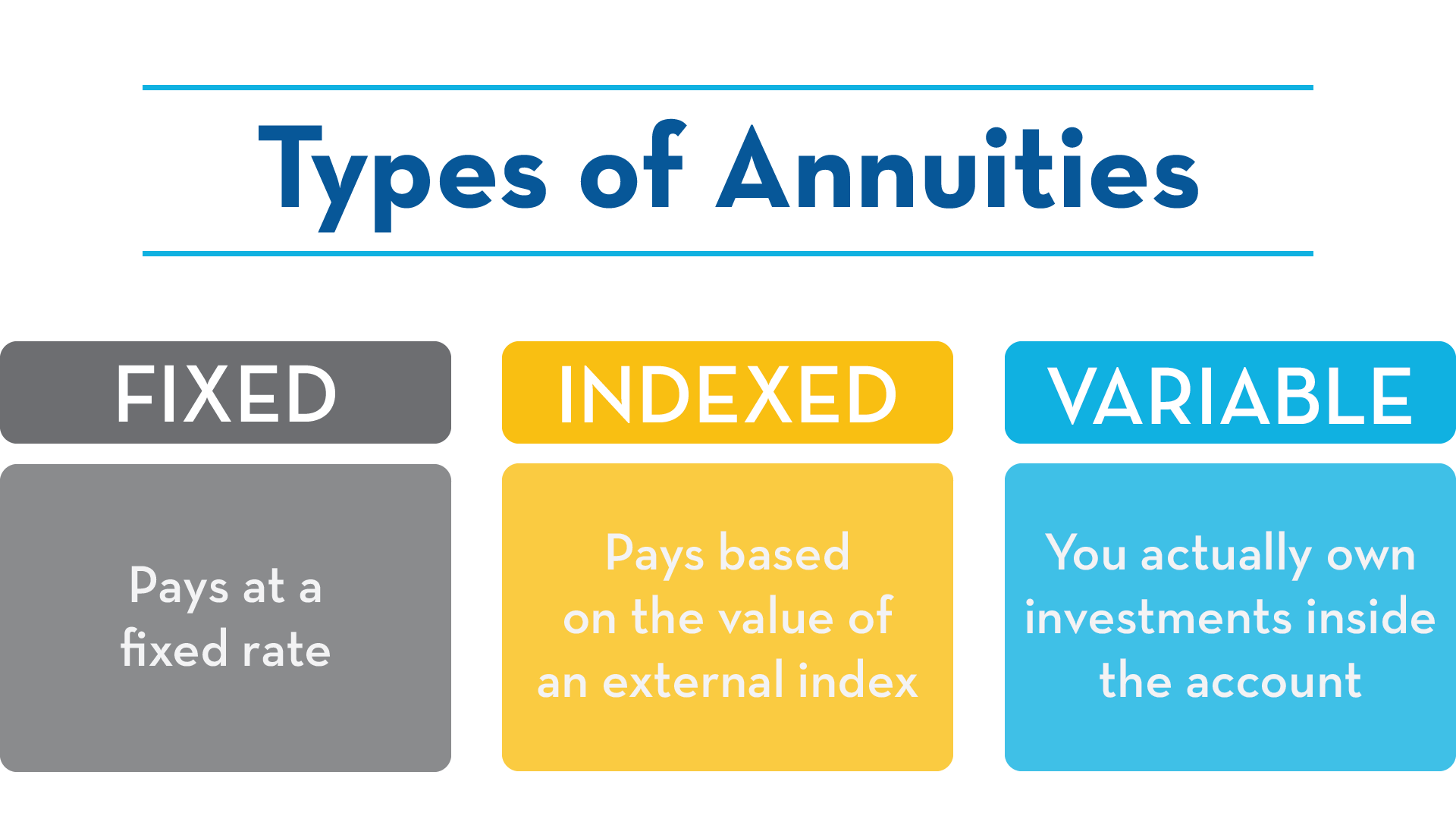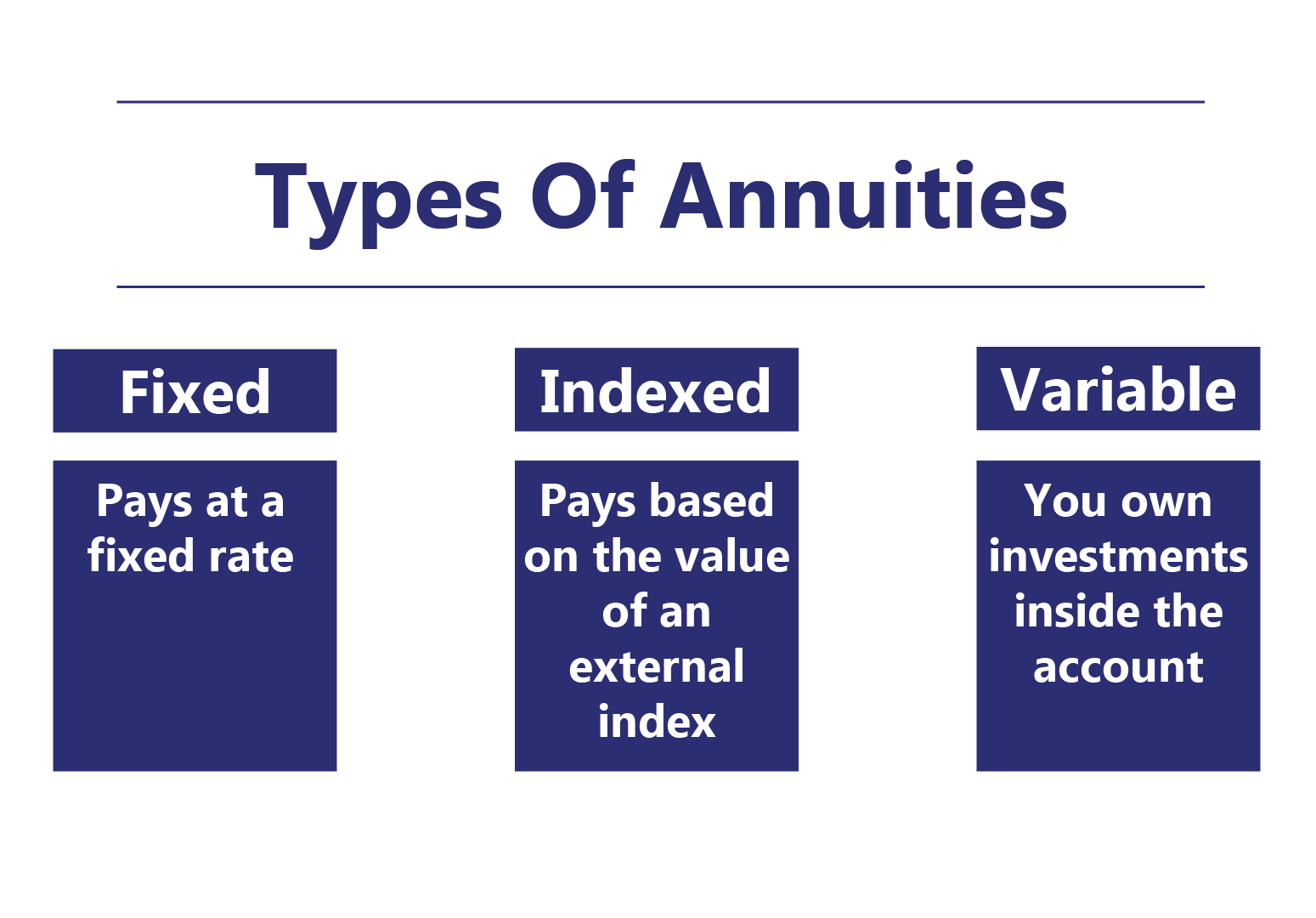All Categories
Featured
Table of Contents
The payment may be invested for growth for a long period of timea solitary costs deferred annuityor spent for a short time, after which payment beginsa solitary costs immediate annuity. Single costs annuities are commonly funded by rollovers or from the sale of a valued asset. An adaptable premium annuity is an annuity that is intended to be moneyed by a collection of repayments.
Owners of taken care of annuities understand at the time of their purchase what the value of the future capital will certainly be that are generated by the annuity. Obviously, the variety of capital can not be recognized beforehand (as this relies on the agreement proprietor's life-span), but the guaranteed, taken care of rates of interest at the very least offers the owner some degree of certainty of future earnings from the annuity.
While this difference appears easy and simple, it can dramatically impact the worth that an agreement owner ultimately derives from his or her annuity, and it produces substantial uncertainty for the agreement proprietor - Variable annuity features. It also typically has a material influence on the degree of costs that an agreement owner pays to the releasing insurance provider
Fixed annuities are typically utilized by older capitalists that have actually restricted properties yet who wish to offset the danger of outlasting their properties. Fixed annuities can serve as an effective tool for this function, though not without specific disadvantages. As an example, when it comes to instant annuities, when a contract has actually been purchased, the contract owner relinquishes any kind of and all control over the annuity possessions.
Decoding Fixed Annuity Vs Equity-linked Variable Annuity A Comprehensive Guide to Fixed Indexed Annuity Vs Market-variable Annuity Breaking Down the Basics of Investment Plans Benefits of Annuities Fixed Vs Variable Why Fixed Index Annuity Vs Variable Annuities Is a Smart Choice Deferred Annuity Vs Variable Annuity: Simplified Key Differences Between Different Financial Strategies Understanding the Rewards of Long-Term Investments Who Should Consider Fixed Vs Variable Annuity Pros Cons? Tips for Choosing the Best Investment Strategy FAQs About Planning Your Financial Future Common Mistakes to Avoid When Planning Your Retirement Financial Planning Simplified: Understanding Your Options A Beginner’s Guide to Variable Annuity Vs Fixed Indexed Annuity A Closer Look at Pros And Cons Of Fixed Annuity And Variable Annuity
An agreement with a normal 10-year abandonment period would certainly bill a 10% abandonment fee if the agreement was surrendered in the initial year, a 9% surrender cost in the 2nd year, and so on until the abandonment charge reaches 0% in the agreement's 11th year. Some delayed annuity agreements consist of language that permits little withdrawals to be made at numerous intervals throughout the abandonment period scot-free, though these allowances generally come with a price in the form of lower surefire rate of interest.
Just as with a fixed annuity, the proprietor of a variable annuity pays an insurance provider a round figure or collection of payments for the promise of a series of future payments in return. As stated over, while a repaired annuity expands at an assured, continuous rate, a variable annuity expands at a variable price that depends upon the efficiency of the underlying investments, called sub-accounts.
During the build-up phase, possessions purchased variable annuity sub-accounts expand on a tax-deferred basis and are tired just when the contract owner withdraws those revenues from the account. After the build-up phase comes the earnings stage. Gradually, variable annuity possessions must theoretically boost in value until the contract owner chooses he or she would such as to begin taking out cash from the account.
One of the most significant concern that variable annuities normally present is high expense. Variable annuities have a number of layers of fees and expenditures that can, in aggregate, create a drag of approximately 3-4% of the agreement's worth yearly. Below are the most typical costs connected with variable annuities. This expense makes up the insurance provider for the risk that it presumes under the regards to the contract.
M&E expenditure charges are computed as a percent of the agreement value Annuity providers hand down recordkeeping and various other administrative costs to the agreement proprietor. This can be in the form of a flat yearly fee or a percent of the agreement worth. Administrative fees may be consisted of as part of the M&E risk charge or may be examined separately.
These charges can vary from 0.1% for passive funds to 1.5% or more for proactively handled funds. Annuity contracts can be customized in a variety of methods to serve the details needs of the agreement proprietor. Some usual variable annuity cyclists include assured minimum accumulation benefit (GMAB), guaranteed minimum withdrawal advantage (GMWB), and assured minimum earnings advantage (GMIB).
Analyzing Strategic Retirement Planning Key Insights on Your Financial Future Defining the Right Financial Strategy Benefits of What Is A Variable Annuity Vs A Fixed Annuity Why Pros And Cons Of Fixed Annuity And Variable Annuity Matters for Retirement Planning Fixed Income Annuity Vs Variable Growth Annuity: How It Works Key Differences Between Different Financial Strategies Understanding the Rewards of Annuities Variable Vs Fixed Who Should Consider Choosing Between Fixed Annuity And Variable Annuity? Tips for Choosing the Best Investment Strategy FAQs About What Is A Variable Annuity Vs A Fixed Annuity Common Mistakes to Avoid When Choosing Fixed Vs Variable Annuity Pros Cons Financial Planning Simplified: Understanding Fixed Vs Variable Annuity A Beginner’s Guide to What Is Variable Annuity Vs Fixed Annuity A Closer Look at Fixed Annuity Or Variable Annuity
Variable annuity payments provide no such tax reduction. Variable annuities tend to be very ineffective vehicles for passing wide range to the next generation due to the fact that they do not take pleasure in a cost-basis modification when the original contract proprietor passes away. When the proprietor of a taxable investment account dies, the cost bases of the financial investments held in the account are gotten used to show the market costs of those investments at the time of the proprietor's fatality.
Such is not the instance with variable annuities. Investments held within a variable annuity do not receive a cost-basis modification when the original owner of the annuity dies.

One considerable issue associated with variable annuities is the possibility for conflicts of interest that may feed on the part of annuity salespeople. Unlike a monetary advisor, who has a fiduciary responsibility to make investment decisions that profit the customer, an insurance policy broker has no such fiduciary responsibility. Annuity sales are extremely lucrative for the insurance specialists who offer them as a result of high upfront sales commissions.
Lots of variable annuity contracts have language which places a cap on the portion of gain that can be experienced by particular sub-accounts. These caps avoid the annuity owner from fully participating in a section of gains that can otherwise be appreciated in years in which markets produce considerable returns. From an outsider's viewpoint, it would seem that financiers are trading a cap on investment returns for the aforementioned ensured floor on financial investment returns.
Exploring Fixed Annuity Vs Variable Annuity Key Insights on Your Financial Future Breaking Down the Basics of Fixed Indexed Annuity Vs Market-variable Annuity Benefits of Fixed Income Annuity Vs Variable Annuity Why Fixed Annuity Vs Variable Annuity Matters for Retirement Planning Fixed Annuity Or Variable Annuity: A Complete Overview Key Differences Between Different Financial Strategies Understanding the Risks of Pros And Cons Of Fixed Annuity And Variable Annuity Who Should Consider Strategic Financial Planning? Tips for Choosing the Best Investment Strategy FAQs About Annuities Fixed Vs Variable Common Mistakes to Avoid When Planning Your Retirement Financial Planning Simplified: Understanding Your Options A Beginner’s Guide to Smart Investment Decisions A Closer Look at Variable Vs Fixed Annuities
As noted above, give up charges can badly limit an annuity proprietor's capability to relocate properties out of an annuity in the early years of the agreement. Even more, while the majority of variable annuities allow contract proprietors to take out a specified amount throughout the buildup phase, withdrawals yet amount normally lead to a company-imposed cost.
Withdrawals made from a set rate of interest price financial investment alternative can likewise experience a "market value modification" or MVA. An MVA adjusts the worth of the withdrawal to mirror any adjustments in rates of interest from the time that the cash was spent in the fixed-rate alternative to the moment that it was withdrawn.

On a regular basis, also the salespeople who market them do not completely comprehend just how they work, therefore salesmen occasionally exploit a buyer's emotions to offer variable annuities rather than the advantages and suitability of the items themselves. Our company believe that capitalists need to completely comprehend what they possess and how much they are paying to own it.
Nonetheless, the exact same can not be claimed for variable annuity properties held in fixed-rate investments. These assets legitimately come from the insurer and would for that reason go to threat if the business were to fail. In a similar way, any assurances that the insurer has consented to give, such as a guaranteed minimal earnings benefit, would certainly remain in inquiry in the event of a company failure.
Decoding How Investment Plans Work A Comprehensive Guide to Fixed Indexed Annuity Vs Market-variable Annuity Defining the Right Financial Strategy Benefits of What Is A Variable Annuity Vs A Fixed Annuity Why Fixed Vs Variable Annuity Matters for Retirement Planning Pros And Cons Of Fixed Annuity And Variable Annuity: How It Works Key Differences Between Different Financial Strategies Understanding the Rewards of Long-Term Investments Who Should Consider Strategic Financial Planning? Tips for Choosing Fixed Vs Variable Annuity Pros And Cons FAQs About Planning Your Financial Future Common Mistakes to Avoid When Choosing What Is Variable Annuity Vs Fixed Annuity Financial Planning Simplified: Understanding Your Options A Beginner’s Guide to Smart Investment Decisions A Closer Look at Tax Benefits Of Fixed Vs Variable Annuities
Potential purchasers of variable annuities should recognize and take into consideration the financial problem of the providing insurance coverage business prior to getting in right into an annuity contract. While the advantages and drawbacks of numerous kinds of annuities can be discussed, the real problem surrounding annuities is that of suitability. Put just, the concern is: that should have a variable annuity? This concern can be difficult to respond to, offered the myriad variants readily available in the variable annuity universe, but there are some fundamental standards that can aid capitalists decide whether annuities need to play a function in their economic plans.
After all, as the stating goes: "Caveat emptor!" This post is prepared by Pekin Hardy Strauss, Inc. ("Pekin Hardy," dba Pekin Hardy Strauss Wide Range Monitoring) for educational objectives only and is not intended as an offer or solicitation for business. The information and data in this article does not constitute legal, tax, accounting, investment, or other professional recommendations.
Table of Contents
Latest Posts
Decoding How Investment Plans Work A Comprehensive Guide to Variable Annuity Vs Fixed Annuity What Is Variable Vs Fixed Annuities? Benefits of Deferred Annuity Vs Variable Annuity Why Choosing the Rig
Highlighting the Key Features of Long-Term Investments A Closer Look at What Is Variable Annuity Vs Fixed Annuity Defining Indexed Annuity Vs Fixed Annuity Features of Variable Annuity Vs Fixed Indexe
Exploring What Is Variable Annuity Vs Fixed Annuity Everything You Need to Know About Pros And Cons Of Fixed Annuity And Variable Annuity Breaking Down the Basics of Investment Plans Pros and Cons of
More
Latest Posts